Abstract
A culture medium was developed which selectively favored the growth of Klebsiella pneumoniae and Klebsiella oxytoca in Escherichia coli-rich fecal cultures, without the use of antibiotics. The discriminative capacity of this medium was based on the presence of only two carbon sources, citrate and inositol, which can be utilized by nearly all K. pneumoniae and K. oxytoca strains but not by E. coli. The medium consisted of Simmons citrate agar (SCA) with 1% inositol (SCAI). Klebsiella strains from fecal samples subcultured on SCAI grew unhampered as yellow, dome-shaped, often mucoid colonies, whereas E. coli appeared as tiny, watery colonies. Apart from some Enterobacter strains, no other types of bacteria were found to mimic the typical appearance of klebsiellae. Recovery experiments from stool samples revealed a limiting ratio of Klebsiella to E. coli of 1:10(6) or more when samples were plated on SCAI versus ratios of 1:10(2) to 1:10(3) on blood agar or Macconkey agar. Compared with an existing Klebsiella culture method, the combination of SCA and MacConkey-inositol-carbenicillin (MIC) agar, Klebsiella yields with SCAI were not lower than those with the combination of MIC and SCA. Furthermore, the efficiency of the SCAI method was twice that of the latter combination. The SCAI plate could be a valuable tool in studies on the epidemiology of K. pneumoniae and K. oxytoca, for example in nosocomial infections, especially those concerning immunocompromised patients.
Full text
PDF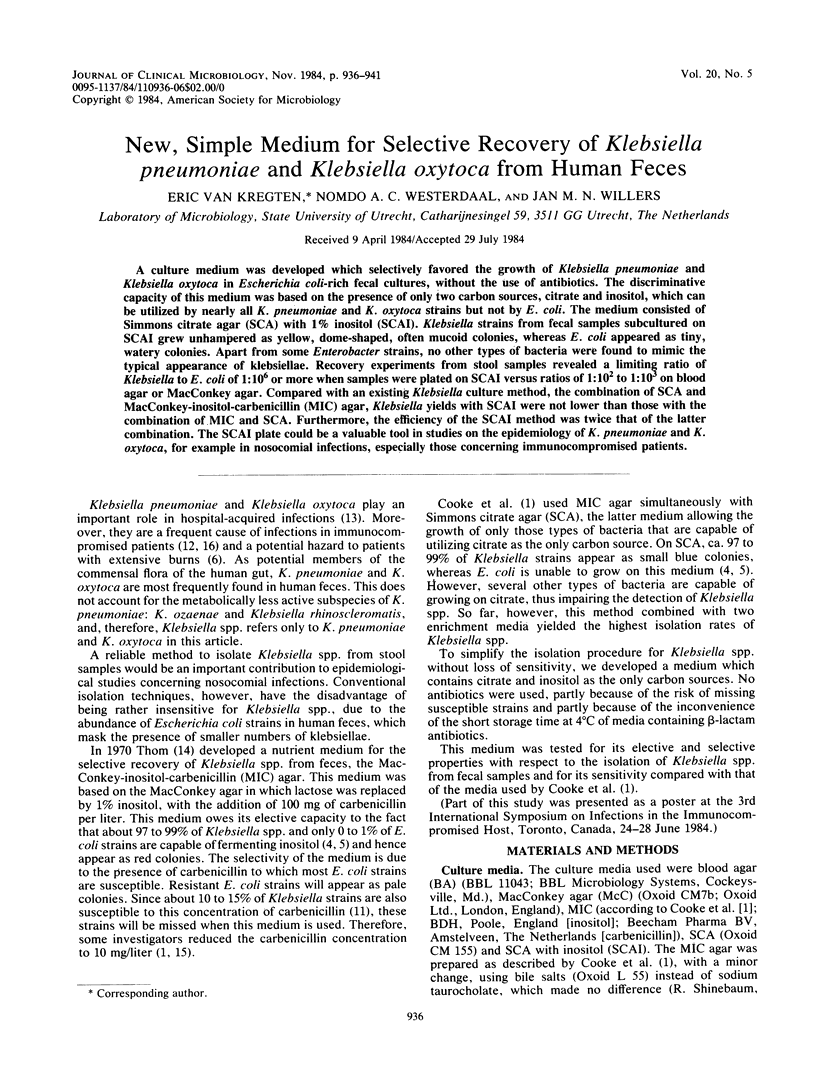
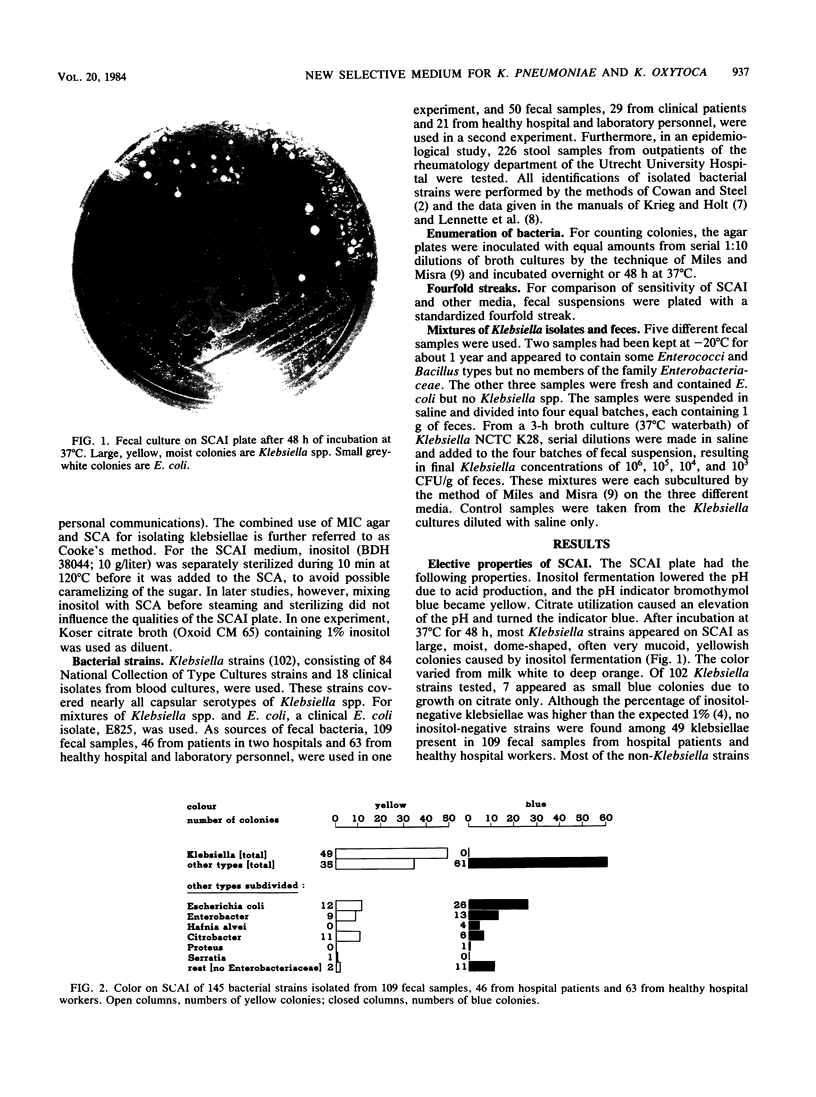
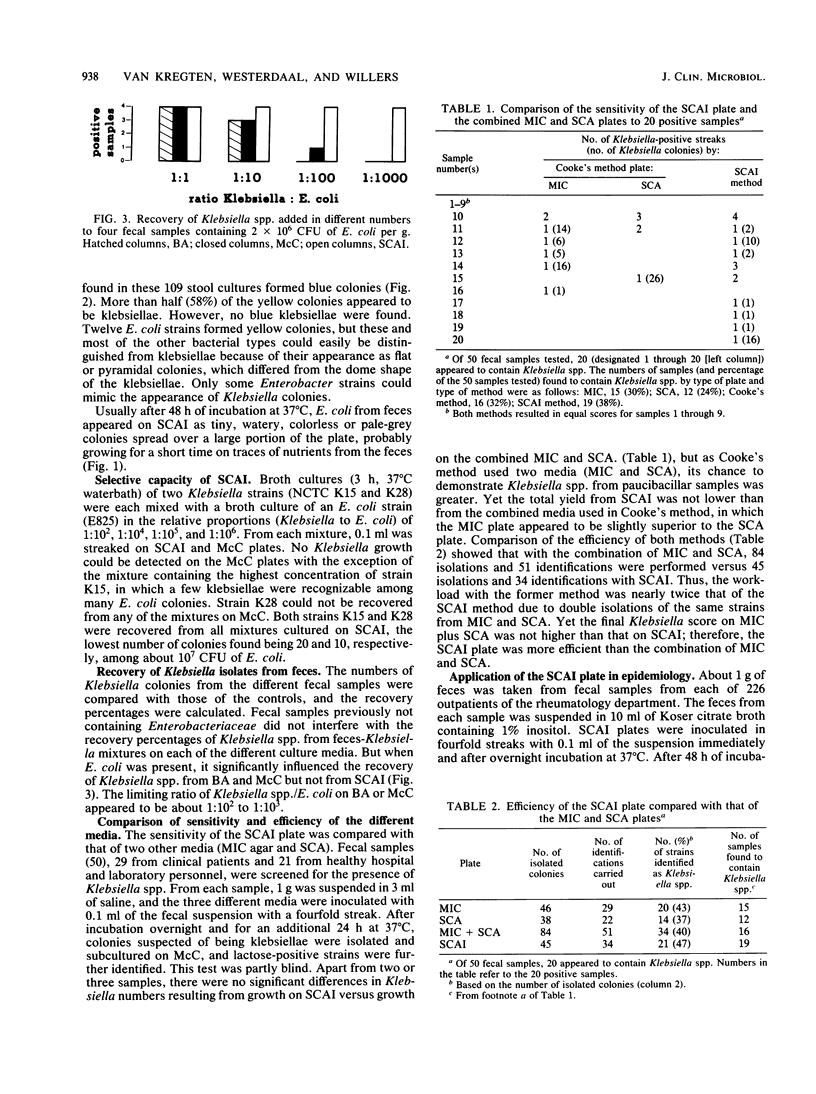
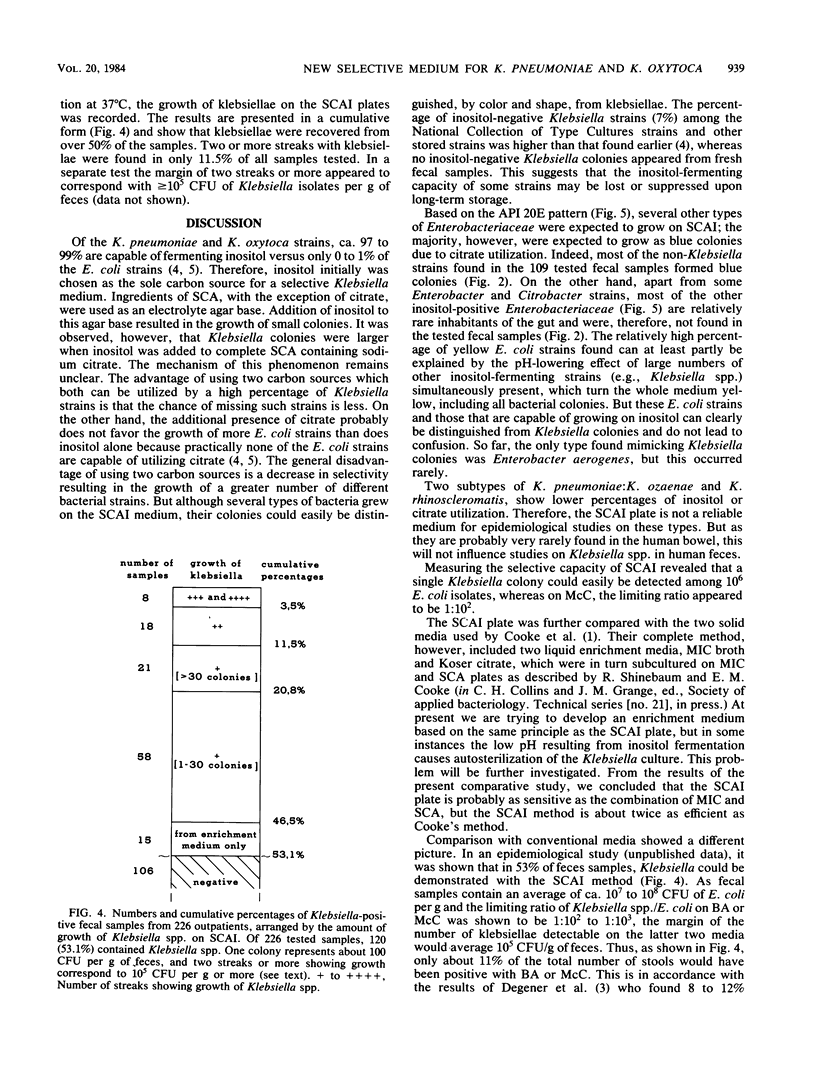
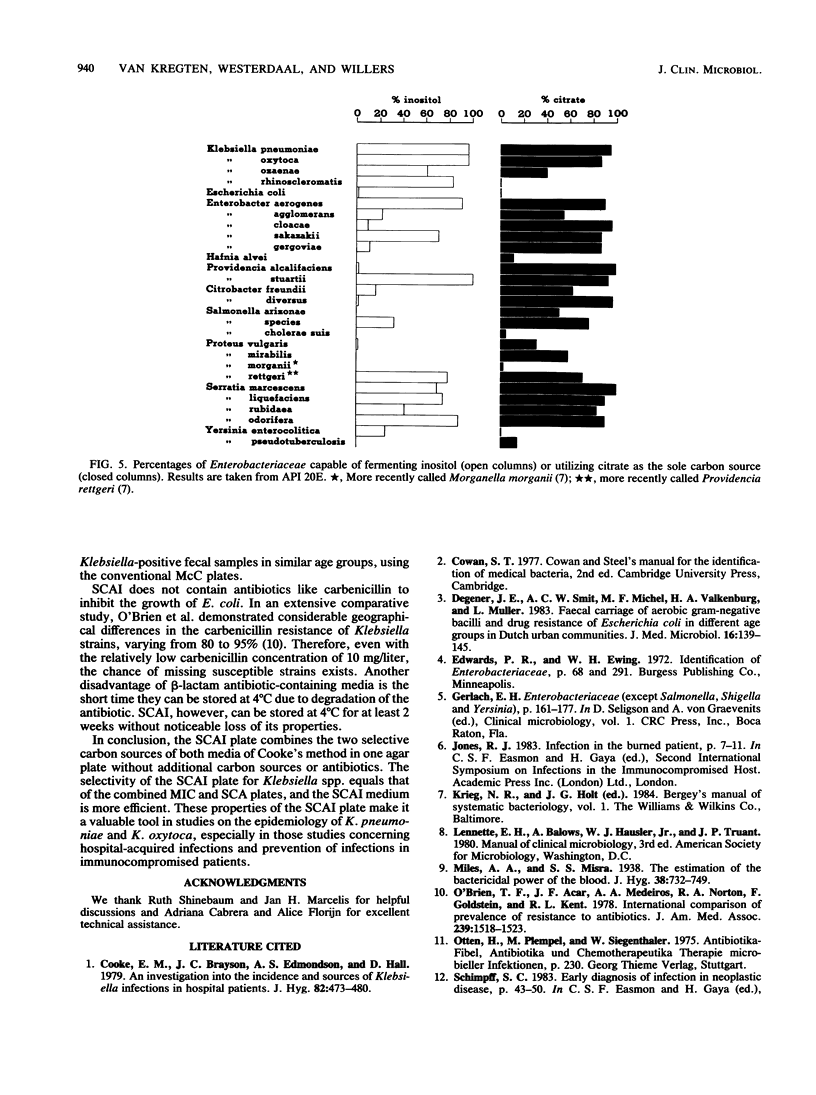
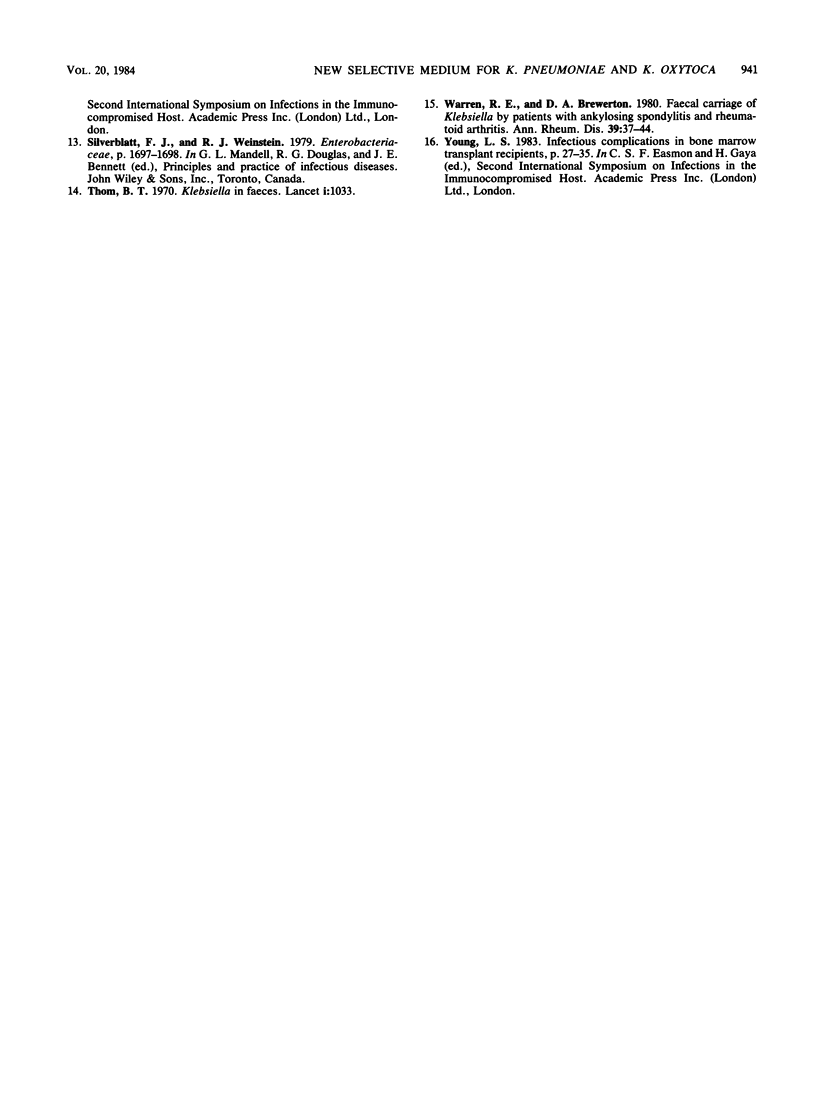
Images in this article
Selected References
These references are in PubMed. This may not be the complete list of references from this article.
- Cooke E. M., Brayson J. C., Edmondson A. S., Hall D. An investigation into the incidence and sources of klebsiella infections in hospital patients. J Hyg (Lond) 1979 Jun;82(3):473–480. doi: 10.1017/s0022172400053997. [DOI] [PMC free article] [PubMed] [Google Scholar]
- Degener J. E., Smit A. C., Michel M. F., Valkenburg H. A., Muller L. Faecal carriage of aerobic gram-negative bacilli and drug resistance of Escherichia coli in different age-groups in Dutch urban communities. J Med Microbiol. 1983 May;16(2):139–145. doi: 10.1099/00222615-16-2-139. [DOI] [PubMed] [Google Scholar]
- O'Brien T. F., Acar J. F., Medeiros A. A., Norton R. A., Goldstein F., Kent R. L. International comparison of prevalence of resistance to antibiotics. JAMA. 1978 Apr 14;239(15):1518–1523. [PubMed] [Google Scholar]
- Warren R. E., Brewerton D. A. Faecal carriage of klebsiella by patients with ankylosing spondylitis and rheumatoid arthritis. Ann Rheum Dis. 1980 Feb;39(1):37–44. doi: 10.1136/ard.39.1.37. [DOI] [PMC free article] [PubMed] [Google Scholar]



